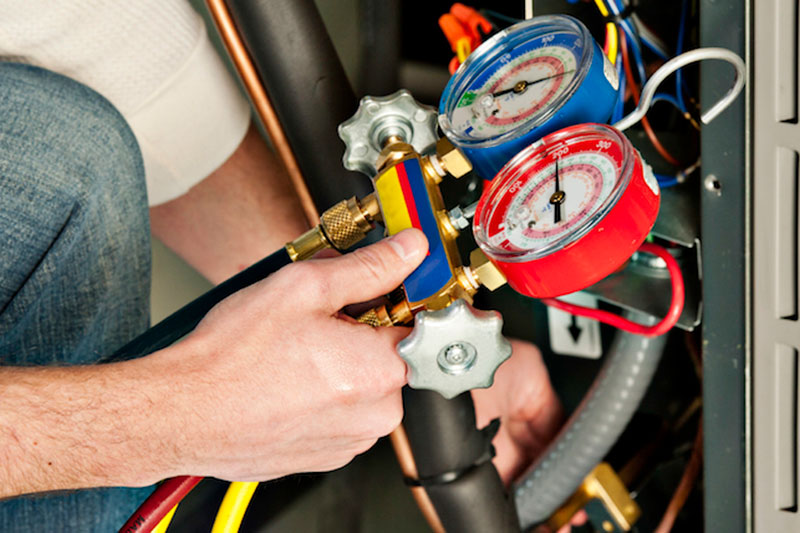
You might not think much about how your air conditioner functions, but it relies on refrigerant to keep your house cold. This refrigerant is bound by environmental regulation, as it contains chemicals.
Subject to when your air conditioner was put in, it may require R-22, R-410A or R-32 refrigerant. We’ll discuss the differences and which air conditioner refrigerants are being phased out in Lexington, as well as how these phaseouts have on influence on you.
What’s R-22 and Why Is It Discontinued?
If your air conditioner was installed before 2010, it likely contains Freon®. You can learn if your air conditioner contains it by calling us at 336-853-6070. You can also examine the name plate on your air conditioner condenser, which is situated outside your residence. This sticker will have info on what kind of refrigerant your AC has.
Freon, which is also called R-22, contains chlorine. Scientists consider Freon to be damaging to the earth’s ozone layer and one that prompts global warming. The Environmental Protection Agency, which controls refrigerants in the United States, outlawed its production and import in January 2020.
Should I Replace My R-22 Air Conditioner?
It depends. If your air conditioning is operating as designed, you can continue to keep it. With regular air conditioner maintenance, you can expect your air conditioning to operate around 15–20 years. However, the Department of Energy says that substituting a 10-year-old air conditioner could save you 20–40% on annual cooling expenses!
If you don’t get a new air conditioner, it might cause difficulties if you require air conditioning repair in the future, specifically for refrigerant. Repairs might be higher-priced, since only small levels of recycled and reclaimed R-22 is on hand.
With the end of R-22, a lot of new air conditioners now have Puron®. Also referred to as R-410A, this refrigerant was developed to keep the ozone layer in good shape. Since it calls for an incompatible pressure level, it doesn’t match air conditioners that rely on R-22 for cooling.
However, Puron still has the potential to create global warming. As a consequence, it could also ultimately be phased out. Although it hasn’t been communicated yet for residential air conditioners, it’s expected sometime this decade.
What Refrigerant Will Replace R-410A?
In preparation of the end, some manufacturers have initiated using R-32 in new air conditioners. This refrigerant ranks low for global warming potential—approximately one-third less than R-410A. And it also reduces energy consumption by around 10%, according to the Intergovernmental Panel on Climate Change’s Fourth Assessment Report. That’s savings that may be passed on to you through your cooling costs.
James Heating & A/C, Inc Can Help with All Your Air Conditioning Needs
In brief, the modifications to air conditioner refrigerant probably won’t impact you a whole lot until you have to have repairs. But as we discussed beforehand, repairs connected to refrigerant can be pricier due to the low levels that are accessible.
In addition to that, your air conditioner typically breaks down at the worst time, often on the warmest day when we’re getting many other appointments for AC repair.
If your air conditioner requires a discontinued refrigerant or is getting old, we suggest getting a modern, energy-efficient air conditioner. This ensures a trouble-free summer and can even reduce your electrical bills, especially if you select an ENERGY STAR®-rated model. Plus, James Heating & A/C, Inc has many financing solutions to make your new air conditioner even more affordable. Contact us at 336-853-6070 to start now with a free estimate.

